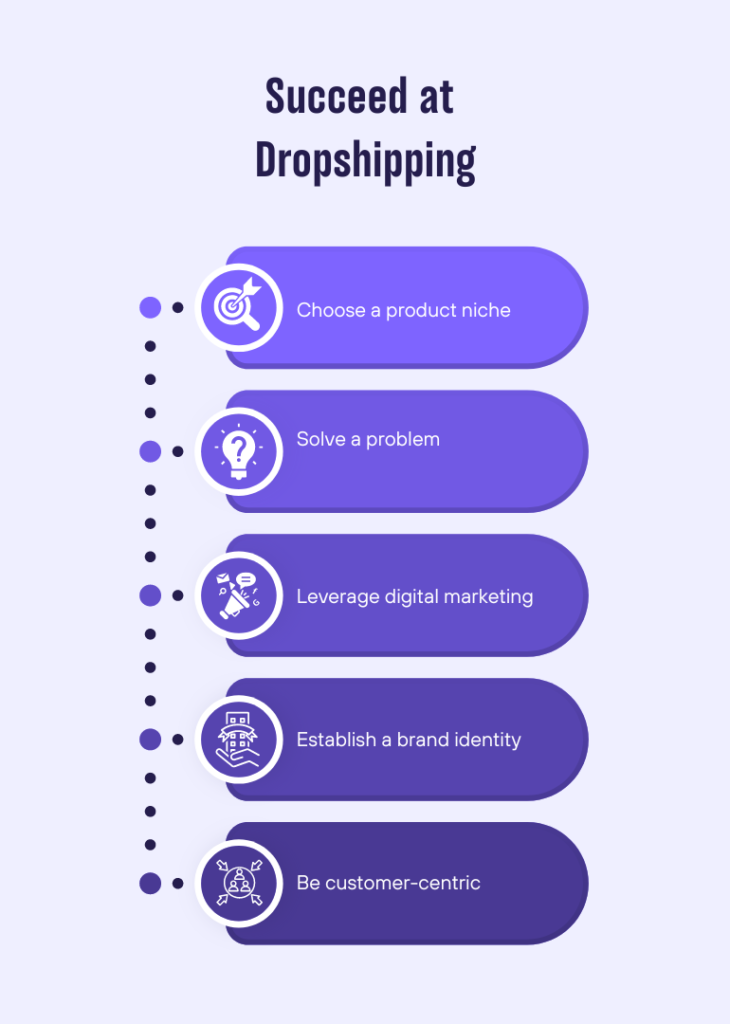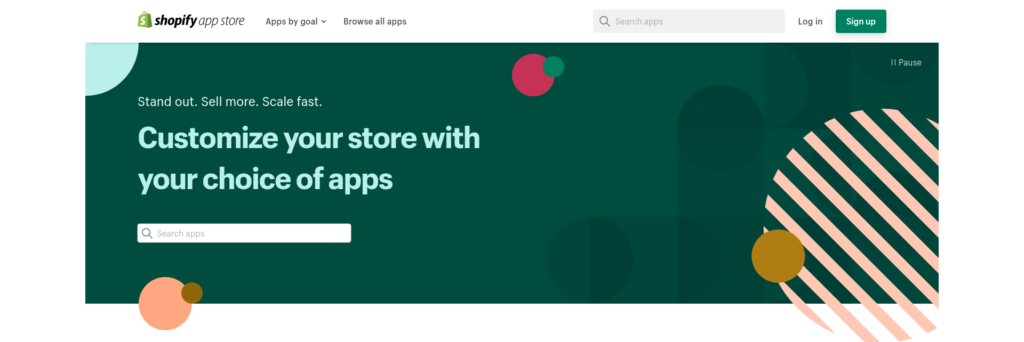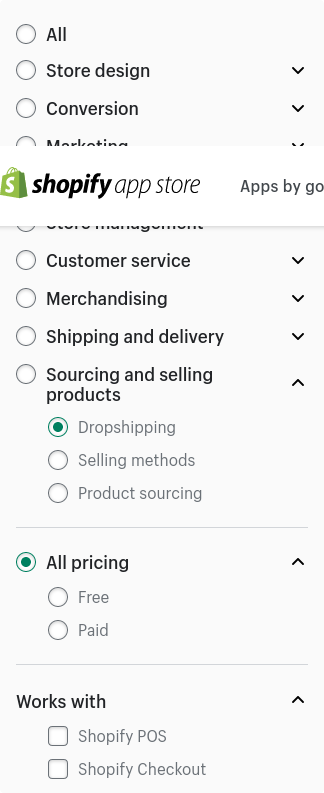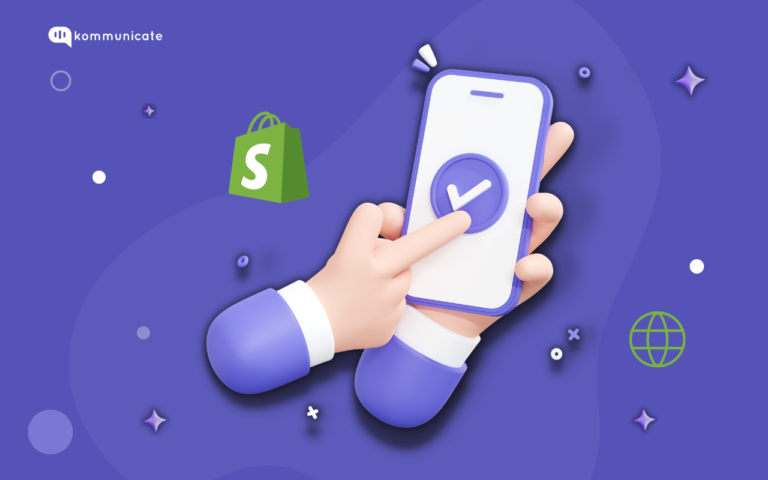Updated on November 8, 2023
Shopify is one of the world’s largest enablers of eCommerce. So it is natural that businesses use it for running a dropshipping business as well. Before we take a deep dive into what Shopify dropshipping is, let’s understand Dropshipping in general.
What is Dropshipping?
Dropshipping can be defined as a business model where the seller accepts an order without keeping or owning the stock.
Sounds intriguing? How can someone sell if they do not have the stock?
Here is an example to better understand dropshipping.
Alex is an e-retailer. He has launched an eCommerce website that sells various millennial-focused merchandise like coffee mugs, t-shirts, custom hoodies, etc.
Although Alex has an eCommerce website, he doesn’t have an inventory of any of the merchandise he sells through his store. However, he has a network of distributors who take orders from him and dispatch them to respective customers. Alex pays the distributors for the products they have sold and distribution charges incurred, all at a discounted price. The volume of business he gives the distributor helps him negotiate a discounted price.
Sometimes, instead of a distributor, Alex can strike a deal directly with the manufacturer. For the manufacturer, it helps generate quick demand for his business, while Alex can get a higher profit by sourcing the products at factory prices.
Alex takes care of the front end of running the website and getting orders. He prices the products at a premium and earns the difference between the retail price and the distributor cost as profit.
He doesn’t have to take care of inventory management, warehouse, packing, distribution, or other logistics since all that is handled by the manufacturer. This is how dropshipping works.
Dropping in numbers
According to Grand View Research, the global dropshipping market size was valued at USD 149.4 billion and is forecasted to touch 557.9 billion by 2025. That’s a 29% CAGR approximately!
With eCommerce seeing no signs of slowing down, the future of dropshipping looks robust. However, dropshipping is not a quick buck-making business model. Adding some products to your store does not mean customers will flock to your store and place orders.
Like any other business, without a proper plan and the basics in place, your dropshipping business can fail.
How to succeed at dropshipping?
There is no silver bullet that will guarantee success in dropshipping. These tips might help you taste success in the long run.
- Choose a product niche
- Solve a problem
- Leverage digital marketing
- Establish a brand identity
- Be customer-centric
1. Choose a product niche
There are countless online stores that could be selling what you want to sell. How would your store be different from the crowd? What would customers expect to find in your store that cannot be found anywhere else?
You need to offer a niche product range that is unique, and customers would want. For example, can you offer custom-designed sneakers? Or coffee mugs with images that customers offer?
A unique offering will have customers flocking to your online store. Also, it doesn’t always have to be a single product. You can choose a range of products belonging to a category that your target audience would be interested in.
2. Solve a problem
Amazon does not own 90% of the goods that it sells through its online store. And so do most of the eCommerce websites. But, they are solving a big problem. They act as intermediaries between customers and manufacturers/suppliers/distributors.
They are sparing either side from getting snared in the difficult task of running everyday operations. Manufacturers, suppliers, and distributors do not have to worry about marketing a product, bringing in demand, and upkeep a brand identity.
Customers, on the other hand, do not have to worry about order management, getting doorstep delivery, returns, refunds, and so on.
It is this convenience that makes dropshipping a success. If you want your dropshipping business to succeed, you must solve a genuine problem in the space in which you are functioning.
For example, if customers do not have transparent shipping or return policy, your dropshipping business should fill that void. This would persuade customers to choose your store above direct sales channels.
3. Leverage digital marketing
As a dropshipper, your primary goal would be to drive maximum demand for the product. The demand and store conversions will ultimately determine your profits. But, how can you drive demand out of thin air?
Digital marketing shows the way. It is an equal-level playing field that anyone can leverage to grow their business. Digital marketing does not require you to spend big sums on billboards or outdoor investments. With the power of search ads, display ads, content marketing, and social media marketing, you can target specific audiences who have the maximum probability of becoming your customers.
You can leverage digital marketing in two ways. First is the DIY route, where all the activities can be set up from scratch and managed on your own. Although this is painstaking and demands a lot of effort, you don’t have to spend an extra penny, allowing you to keep all the money to yourself.
Alternatively, you can engage a digital marketing agency that can take care of the entire logistics while you focus on the business side of dropshipping. It could be getting more distributors, fine-tuning the supply chain, introducing new customer delight features, etc.
Either way, you will have to leverage digital marketing to grow your dropshipping business.
4. Establish a brand identity
Having a strong brand identity is like minting your own money. Your store will attract prospects like a magnet attracting iron. It is the power of brand identity that is allowing Apple, Nike, Starbucks, and several other businesses to sell their products easily.
Establishing a brand identity is a time-consuming and long-drawn process. You cannot buy brand identity either, like a website theme or a mobile app. It is akin to a relationship, a virtue, an emotion that is intangible in nature and can only be acquired with effort.
If you’re new to the dropshipping space and want to establish a brand identity, these steps can help you get started.
- Nail down product positioning
Selling a product is easier if you know where to sell and to whom to sell. Product positioning is all about where and whom. Without product positioning, you could try to convince the wrong market that is stubborn not to buy from you.
To get your product positioning right, conduct elaborate customer research on their pain points, expectations, untold inconveniences, etc. Position your brand as a provider of a solution that meets their expectations.
- Create brand presets
Most businesses confuse a logo as the ultimate emblem of brand identity. On the contrary, it is only one among the many things that your customers see when they come across your brand. Brand identity also includes the font it uses, the color, the website style and navigation, and several other presets. In fact, every single facet that your customers come in contact with should be customized to make your brand identity stronger and more prominent.
- Craft a brand tone and voice
The brand tone and voice are how your brand will interact with the outside world. What vocabulary would it use, what kind of emotion will it create with its communication, etc. in other words, if the brand was a person, how would this person speak and communicate? This forms part of the brand identity as well.
- Attract attention
No brand ever becomes popular without attracting attention. But, ensure that your brand attracts the attention of the right kind. The brand should always build a positive brand identity lest it becomes a target for competition.
- Engage with audience
For a brand to become memorable and closer to its customers, it should engage in the real world. It could be through social media, email marketing, or any other channel. Without two-way interaction, the conversation will remain one-way and will not lead anywhere.
5. Be customer-centric
There is no brand that can ever become successful by ignoring its customers. It is those businesses that have practiced customer-centricity that have become popular brands. Incidentally, customer-centricity also bakes into the overall brand identity spectrum.
While most of the points discussed above to succeed at dropshipping can be applicable to any business, there is one point that is crucial to dropshipping. It gives the best shopping experience to customers. Your online store must give customers a warm experience that will convince them to come back and shop for more.
Shopify is one eCommerce platform that helps you build your eCommerce website for dropshipping and otherwise. Shopify’s pricing is targeted at small and medium enterprises with customized plans offered for enterprises.

Dropshipping through Shopify – Legality, pros, and cons
Is dropshipping through Shopify legal?
Long answer short: Yes. It is completely legal to run a dropshipping business through Shopify. However, you must be conscious enough to comply with all statutory regulations and compliances that are applicable for running a business in your region. In other words, you must now sell or trade goods that are explicitly banned in your State or country. For example, certain additives used in baking products are banned in Europe but are allowed to be freely used in the USA.
So, the choice of products you choose for dropshipping should be legal.
Now let’s take a look at the pros and cons of dropshipping through Shopify.
Pros of dropshipping through Shopify
So far, Shopify has remained the top pick for anyone who wants to start a dropshipping or eCommerce business. Here are the pros that are drawing users to the platform, like bees to honey.
1. Low startup costs
You don’t need to spend exorbitant costs on developing an eCommerce website from scratch. Further, there is no need to have a dedicated warehouse or inventory management solution in place. Shopify makes it easy to get started even if you are not right-handed with technology.
2. Effortless store management
Shopify makes store management a breeze. The admin panel is plush with options for controlling the look and feel of the performance and also the website layout, all of which are integral to running a dropshipping business.
3. Quick scalability
Scaling an eCommerce business with Shopify is a breeze. The platform is built for quick scalability and does not make businesses wait for want of developmental efforts or legal hassles. You can easily purchase a higher plan if the current pricing plan proves to be limiting for your dropshipping business growth. Shopify has a pay-and-use model, which also lets you forecast the cost with some certainty.
4. Robust eCommerce features
Running promotions, product bundling, geo-targeted pricing, automating workflows, and much more eCommerce functions is easier with Shopify. Its robust eCommerce features are one of the draws that persuade eCommerce businesses to stick to it.
Cons of dropshipping through Shopify
Although rich with pros, Shopify does have a few cons that you must be aware of to make an informed decision.
1. Limited design customization
Shopify offers thousands of pre-built website designs and themes. However, if you want to customize them and make it truly personal, you will soon find out that there are limited options. That makes limited design customization one of the cons of choosing Shopify for your dropshipping business.
2. Low margins can threaten the bottom line
Yes, Shopify has a pricing plan that is of utmost friendly for small businesses. However, it is a fixed plan and you need to pay on a regular basis — monthly or yearly as you choose. If your dropshipping business does not generate adequate revenue, the fixed cost could threaten the bottom line and the future prospects of your business.
3. Marketing automation is missing
Shopify lets you automate most of the eCommerce workflows, but when it comes to marketing automation, the options are limited. You’ll either have to integrate third-party applications or invest in tools to automate the marketing workflows of your dropshipping business.
Although there are cons, it is evident that the pros of running a dropshipping business through Shopify is a practical option.
Dropshipping through Shopify- Steps
Here is how you start dropshipping through Shopify:
- Create your Shopify account
- Integrate dropshipping apps
- Add dropshipping products to your store
- Set up the website
1. Create your Shopify account
Without a Shopify account, you cannot run a business. Shopify offers a 14-day free trial through which you can get a pulse of the platform, how it works, and how you can use it to build your dropshipping business.
2. Integrate dropshipping apps
To run your dropshipping business through Shopify, you must integrate dropshipping apps that are available through the Shopify app store.
To find the apps:
- Head to the Shopify app store

2. Choose dropshipping under ‘Sourcing and selling products and click on Dropshipping

You can find apps on the left side of the admin dashboard. By default, dropshipping apps like Oberlo and Aliexpress are available. You can still explore other options like:
If you are looking for inspiration for dropshipping store’s design, check out this blog that details some of the popular dropshipping stores.
3. Add dropshipping products to your store
You can either add your own product catalog or use Shopify’s own algorithm to find products that you want to see. You can see this option during the signup process itself.
Here are a couple of things to keep in mind while you are trying to handpick dropshipping products for your store:
- Reviews and ratings
- Wholesale cost
- Sales quantity
- Shipping modes
4. Set up the website
As mentioned before, setting up a Shopify store is a simple process. You can begin with choosing the theme or design for your website from Shopify’s built-in theme store. You can add further details like contact information, customer support channels, navigation menus, domain name, URL, and so on. Basically, here is where you will input all information that you will input when you are developing a website from scratch.
Once your store is up and live, you can kickstart your dropping business.
Conclusion
It is true that dropshipping has a fractional success rate. But should that deter you? If you get the equation right, you can turn your dropshipping business into a successful one as well. The tactics described above to succeed at dropshipping, combined with design inspiration from the popular Shopify stores, can help you grow your dropshipping quickly.
At Kommunicate, we are envisioning a world-beating customer support solution to empower the new era of customer support. We would love to have you onboard to have a first-hand experience of Kommunicate. You can signup here and start delighting your customers right away.






